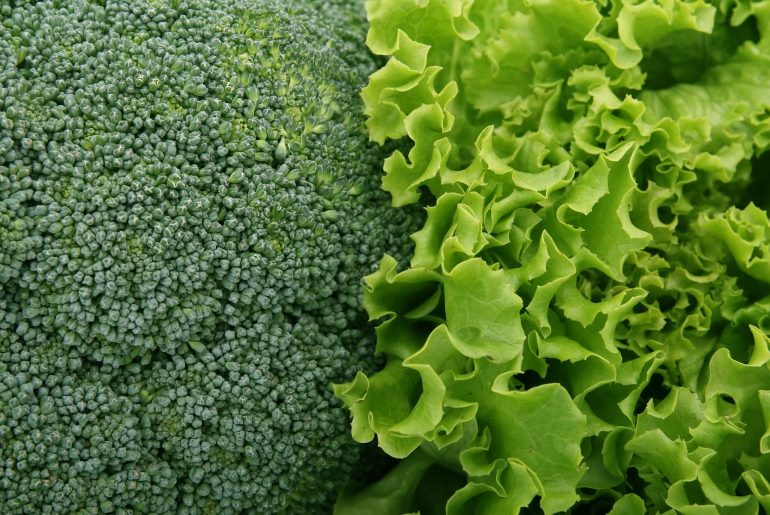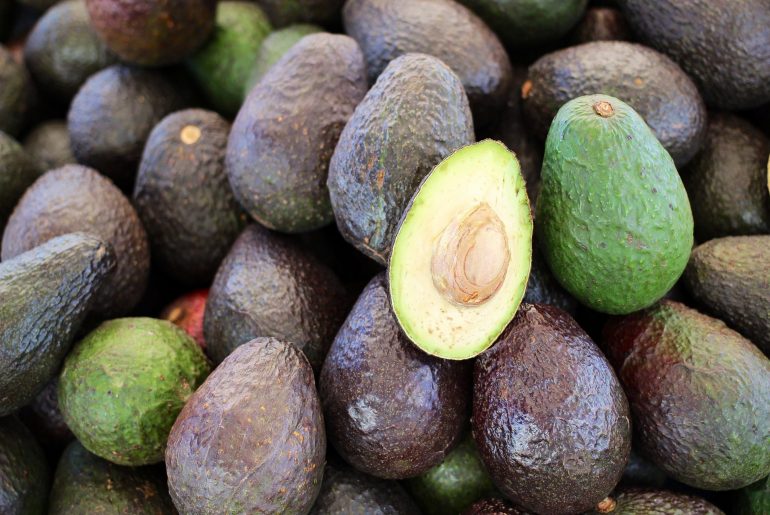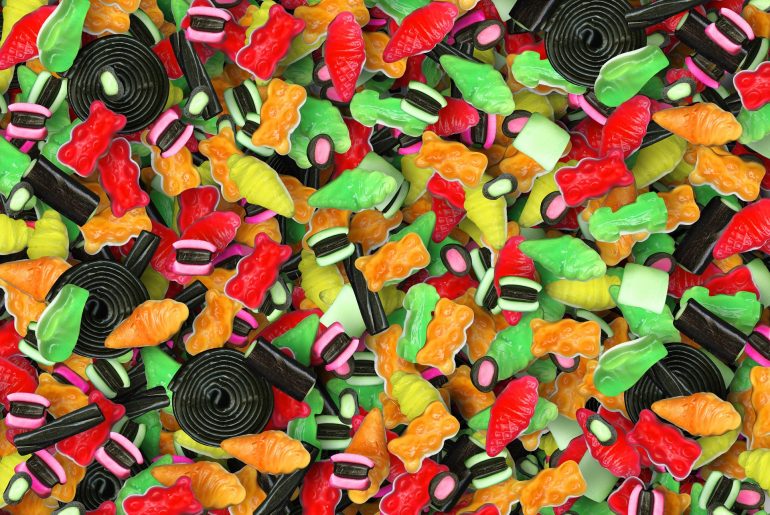Unless you’ve been under a rock, you know that the government is in a partial shutdown sparked by differences of opinion between the president of the United States and members of Congress over funding for Trump’s border wall. More than 800,000 federal employs have gone unpaid during this, the longest government shutdown in history. One of the affected departments is the U.S. Food and Drug Administration. You know — the ones who check to make sure our food is safe to eat. Without proper funding, FDA employees aren’t able to adequately carry out crucial tasks including publishing recalls and outbreaks. The absence of this vital information would be bad enough, but after 2018’s record number of FDA recalls, ranging from romaine to Goldfish crackers, its a bit unnerving what we might be missing in the wake of the agency’s absence. Before the government shutdown, it wasn’t unusual for the FDA to…
This is why you need to wash your avocados
Avocado lovers, your favorite food has a bit of a dirty secret. A new report from the Food and Drug Administration (FDA) says that washing avocados before eating them is crucial. A good portion of the avocado skins sampled recently tested positive for bacteria like listeria or salmonella during. Yikes! Of course you don’t eat the skin, but you’re still at risk if you don’t wash your fruit first. That’s because the knife you are using to cut through the avocado’s exterior (and you certainly have to use a knife to break through) can carry these potentially fatal bacteria into the flesh of the fruit — which you do eat. Of the 1,615 avocados sampled in the study, 17 percent carried the harmful bacteria, so this isn’t a one-in-a-million chance — this is very common. The study included avocados grown both domestically and internationally. The good news is that only .24…
How to tell if your edible glitter is actually safe to eat
This time of year, we’re up to our elbows in cookie dough. While decorating the finished product has always been the most fun part of baking, the Food and Drug Administration has warned that some products we use to decorate our holiday cookies aren’t actually edible. It turns out that the dust and glitters you find at the store — yes, even in the food aisles — aren’t always edible. So if you’re shopping for sparkles for your Christmas cupcakes or shimmer powder for your NYE disco ball cookies, you’ll want to take a closer look at the packaging. Luckily, it’s pretty easy to figure out what’s edible and what’s purely aesthetic once you know what to look for. Companies that make edible decorations including glitter and twinkle dust are regulated by the FDA and, just like any other food, are required by law to list the ingredients on the…
Nutrition labels are about to look different
The next time you pick up a bag of chips at the grocery store, flip it over and look for the new nutrition label. The Food and Drug Administration announced that nutrition labels would be receiving a makeover that reflects new scientific findings. The changes will ultimately help you make better-informed choices about foods you and your family eat. The new labels will only be required of manufacturers who sell more than $10 million in food a year. Companies in this category have until 2020 to adopt the new label. Some manufacturers have already incorporated the new label into their packaging, so it might already look familiar if you’re a frequent label checker. One of the most noticeable changes comes with the serving size and calories. Serving sizes have been adjusted to reflect how much people actually eat, rather than an arbitrary number some companies were perviously using to skew…
Six ingredients commonly found in gum, soda, candy banned by the FDA
Just in time to squash your Halloween fun, the Food and Drug Administration has nixed six synthetic flavorings commonly found in candy, soda, baked goods, booze, and gum. The ingredients in question have all been shown to directly contribute to cancer in animals. They included synthetically-derived benzophenone (also used in rubber reusable food containers), ethyl acrylate, eugenic methyl ether (methyl eugenol), myrcene, pulegone, and pyridine. Even if you’re an avid label checker, these names probably don’t look familiar to you. Since they fall under the umbrella of proprietary “artificial flavors,” the manufacturers don’t have to print them in the ingredients list, according the FDA. The additives are known to contribute floral, cinnamon, mint, citrus, mango, pineapple, garlic, roasted onion, and woody flavors, according to a petition. The ingredients were proven to cause cancer in laboratory animals by the United States Department of Health and Human Services’ National Toxicology Program. But no…
FDA warns of dangers associated with eating foods prepared with liquid nitrogen
Well, it was fun while it lasted. The U.S. Food and Drug Administration just sent a piece of your summer fun up in a cloud of smoke. The FDA issued a safety alert on Thursday warning consumers about potential dangers associated with eating food containing liquid nitrogen. Liquid nitrogen laced foods such as cereals, ice cream, and cheese puffs have become popular in recent years because they “emit a misty or smoke-like vapor,” according the the FDA alert. This vapor leaves the consumer with the ability to briefly blow smoke out their nose and mouth to look like a dragon. The foods, often called “Dragon’s Breath” or “Heaven’s Breath”, are commonly served at fairs and festivals, as well as mall kiosks and some ice cream shops, the FDA said. The alert said serious injury, including internal organ damage, can result or eating such foods. Individuals with asthma could be especially at risk. “The FDA…
How to tell you have food poisoning and what may have caused it
Summer is a big season for food poisoning. All of those backyard parties and picnics can lead to some pretty questionable food handling habits. One in six Americans — about 48 million people — will deal with some type of foodborne illness this year, according to the Food and Drug Administration (FDA). That means you’ve ingested bacteria, viruses or parasites that can really do a number on your body. But how do you distinguish funky food from a safe snack, and how do you know it’s not some other ailment? Food poisoning symptoms According to the Mayo Clinic, your food poisoning symptoms will differ depending on what your food was contaminated with, as well as your age. Very young or elderly people, pregnant women and those with weaker immune systems or chronic diseases face a high risk in contracting a foodborne illness, but food poisoning can affect anyone. Here are some…
Major retailers recalling 207 million eggs after salmonella outbreak
More than 200 million eggs are being recalled after the Food and Drug Administration said they could be contaminated with salmonella. The agency said there have been 35 reported cases of illness, including 11 hospitalizations. No deaths have been reported. The FDA said that the outbreak could be traced to a single facility in Hyde County, North Carolina belonging to Rose Acre Farms in Seymour, Indiana. The farm is now recalling nearly 207,000,000 eggs that were sold at a variety of retailers and restaurants including Walmart, Publix, Food Lion and Waffle House. The recalled eggs were distributed in Colorado, Florida, New Jersey, New York, North Carolina, Pennsylvania, South Carolina, Virginia, and West Virginia. These are the affected egg brands: Coburn Farms Country Daybreak Crystal Farms Food Lion Glenview Great Value Nelms Sunshine Farms Waffle House For a full list of products, visit the FDA’s website here. Salmonella is a bacteria infection that can cause…
Calorie counts on most fast food menus are now required
You know that fast food is totally terrible for you, but if you had nutrition information in front of your face while you ordered, would you practice some restraint? The next time you head to a Taco Bell or even Coldstone Creamery you’ll be tested. Starting May 7, the Food and Drug Administration will require any food outlet with more than 20 locations to list the calorie counts for each menu item — every restaurant from Auntie Annes to Chick-fil-A, Orange Julius and Panera are affected. And the information won’t be posted exclusively online, or in some dark corner of the restaurant either. The calorie counts will be front and center on the menu, so you won’t be able to throw caution to the wind and order those Doritos Locos Tacos and hope for the best. You’ll know exactly the size of the caloric gut-bomb you’re eating. It’s an Obama-era policy that…
Watch your black licorice intake, FDA warns
This week as you’re snacking on Reese’s cups and Snickers in a post-Halloween candy coma, remember there is one candy you really can overdose on — black licorice. The Food and Drug Administration (FDA) encourages people to remember during this candy-centric time of year, that if you enjoy snacking on this old-fashioned favorite, to do it in moderation, particularly if you are over 40. FDA experts say glycyrrhizin, a sweetening compound found in black licorice that can cause potassium levels to fall in the body. With low potassium levels, some people will experience lethargy, abnormal heart rhythms or even congestive heart failure. If you’re a fan of back licorice, the FDA offers advice: No matter your age, don’t eat copious amounts of black licorice at a time. If you develop any of the symptoms listed above such as an irregular heartbeat or muscle weakness, stop eating the black licorice immediately…










